North Norfolk
|
A diverse landscape of rolling hills, flat salt marsh and even a ridge of upland, containing a variety of things to see and do |
|
An Introduction to North Norfolk
|

The North Norfolk landscape is one of the most varied in the country. You will find gently rolling countryside, flat salt marsh and even a ridge of heath upland, left at the end of the last ice age. Whatever takes your fancy, you will find it in North Norfolk, including picturesque villages, fascinating craft shops, beautiful beaches and miles of rural woodland. It has always been a great place to experience the great outdoors and fill your lungs with clean, fresh air - this is why resorts such as Cromer were so popular in Victorian times, when thousands would arrive by train from smog filled city's. Today the air is just as fresh and its a great place to walk the dog or fly a kite. North Norfolk is brilliant for walkers and has paths that give some the best views in the country- the view from the ridge of upland over the coast for example. Inland, North Norfolk does not disappoint, with peaceful villages, wildlife and plenty of country pubs to discover. Finally, make sure you get visit the Georgian town of Holt, a shoppers paradise, crammed full of individual galleries and shops, set out in a labyrinth of pretty yards, streets and lanes. Whatever you are looking for, North Norfolk has something just for you! |
Local Websites |
|
 |
|
|
North Norfolk Map
|
|
Click the edges to re-centre the map |
Map contains Ordnance Survey Data © Crown copyright and database right 2018 |
|
North Norfolk Guided Picture Tour
|
Our tour of North Norfolk starts at Burnham Overy Staithe, one of 7 villages referred to as " The Burnhams". Overy Staithe comes alive with boats when the tide allows, as there are plenty of creeks and channels to explore in your dinghy or motor boat. A couple of miles inland is Burnham Market, known as " Chelsea on sea" as it attracts visitors from upmarket London and has the sort of shops that you would normally find down the Kings Road! Nearby Burnham Thorpe is the birth place of Lord Admiral Horatio Nelson, his father was Rector at the local church. |
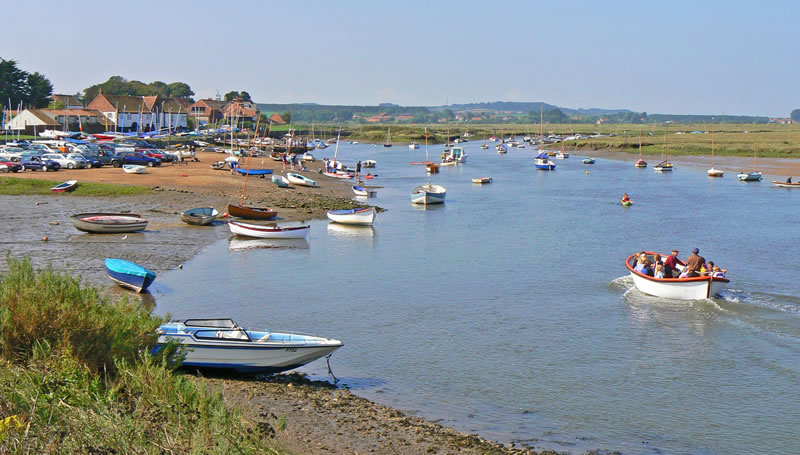
Burnham Overy Staithe |
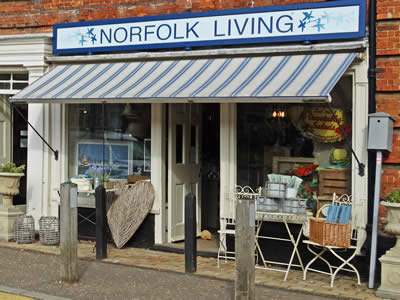
Norfolk Living Shop |
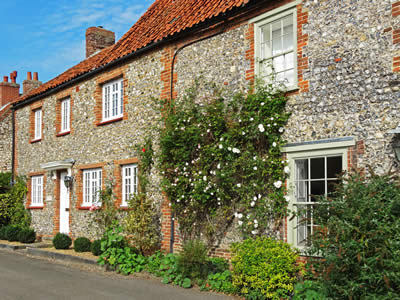
Flint cottages in the centre of Burnham Market |
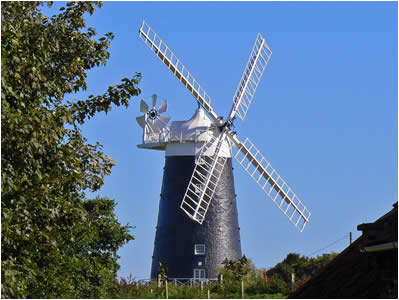
Burnham Overy Windmill |
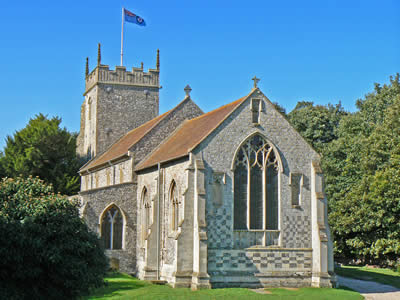
The Church at Burnham Thorpe |
Further along the North Norfolk Coast is Holkham Bay, a magnificent wooded bay, that is wonderful for a walk. A drive leads from the bay to nearby Holkham Hall, which is set in parkland. The hall is open to visitors (seasonal). |
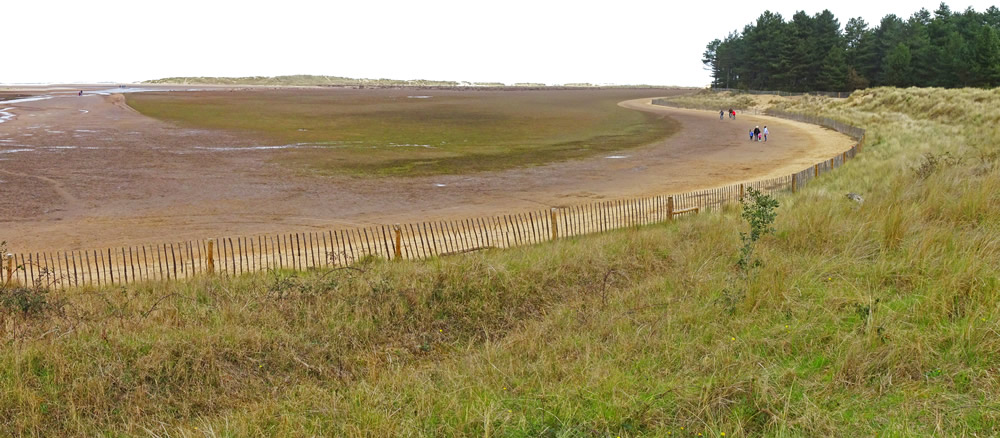
A panorama of Holkham Bay at low tide (click to open the full picture) |
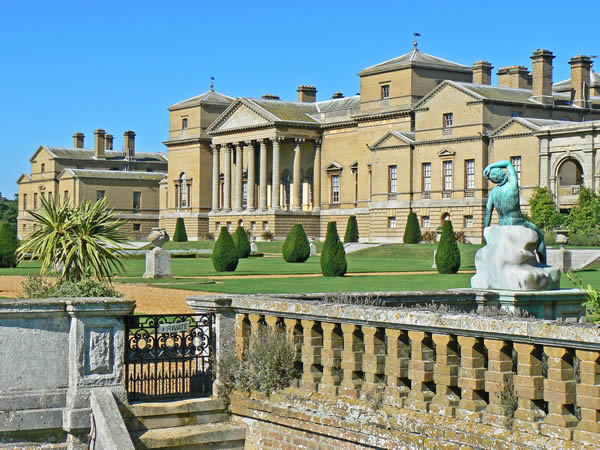
Holkham Hall, North Norfolk Coast |
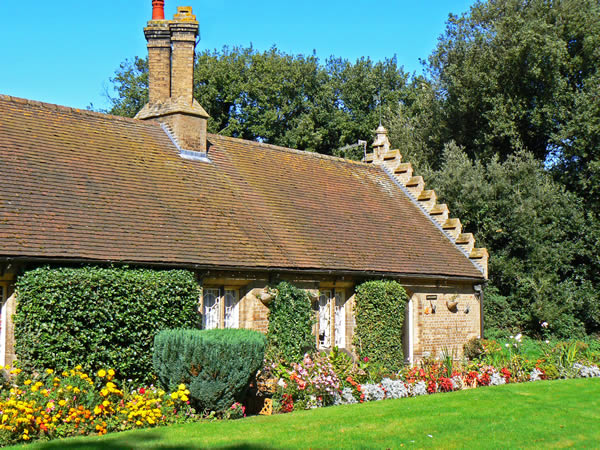
The gate keepers cottage at Holkham Hall |
Next, we come to Wells next the Sea, a classic seaside town, situated a good a good mile or so from open water. Like many places along this stretch of the North Norfolk Coast, silting has limited access to the sea, but back in Tudor times, Wells was one of the great ports of eastern England. It’s still one of the most attractive towns on the North Norfolk coast, and the only one to remain a commercially viable port. It features many narrow lanes nicely sheltered from the offshore winds and makes a very good base for exploring the surrounding coastline. |
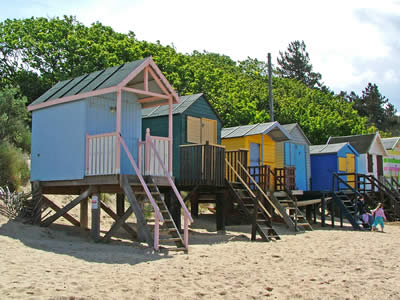
Beach huts at Wells next the sea |
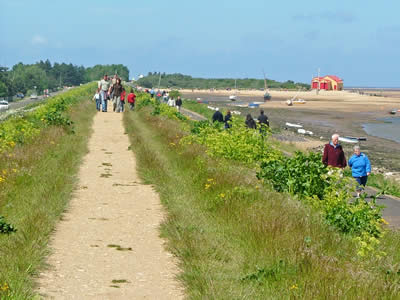
Wells footpath from the town to the beach |
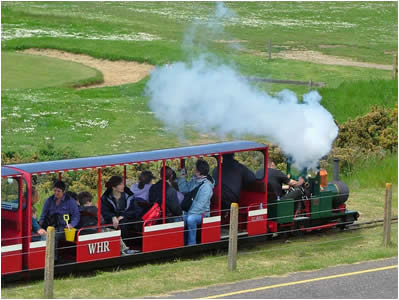
Narrow gauge steam railway train at Wells |
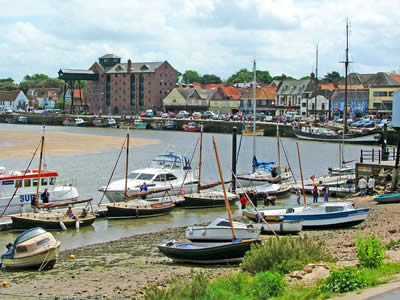
Wells next the sea Harbour |
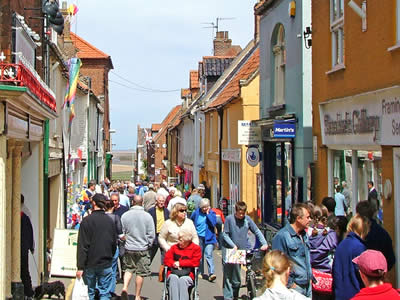
Staithe Street in Wells next the sea |
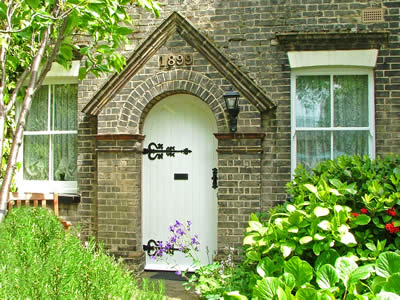
Buttlands Georgian property Wells next the sea |
Next along the North Norfolk Coast is Morston and Blakeney. Like Wells, Blakeney started life as a busy medieval commercial port until the estuary began to silt up preventing all but pleasure craft from gaining access. The silting has left a fascinating landscape of marshes, sand hills and mud banks, with many creeks and channels twisting and turning their way through. Blakeney village is set on a small hill leading down to the harbour and has pretty flint cottages (many for holiday rent), shops, tea rooms, restaurants, hotels, pubs and inns. In a side street off the quay is the 14th century Guildhall which has an early example of a brick built vaulted ceiling. The beautifully restored, village church is large and spacious with many interesting features. |
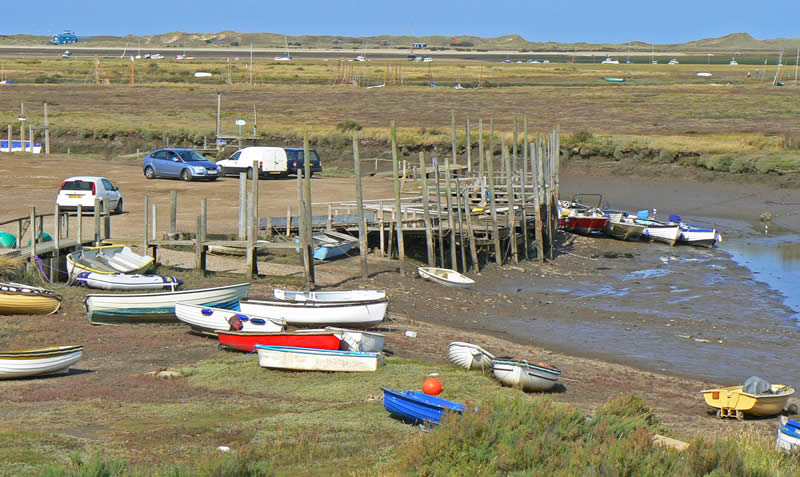
Morston Quay and Blakeney Point (the blue building on the horizon is the NT visitor centre) |
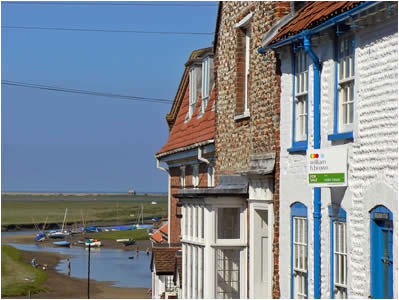
Blakeney Cottages |
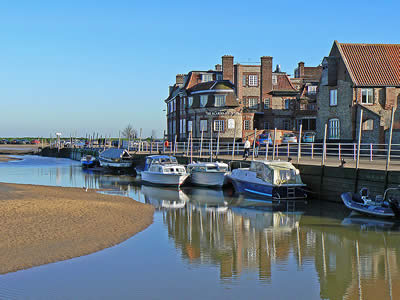
Blakeney Harbour and Quay |
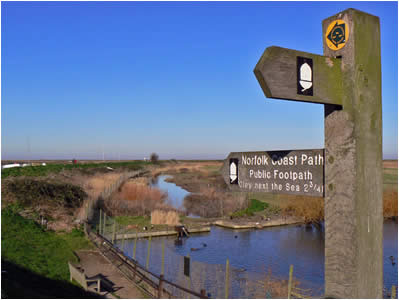
Norfolk Coast Path at Blakeney |
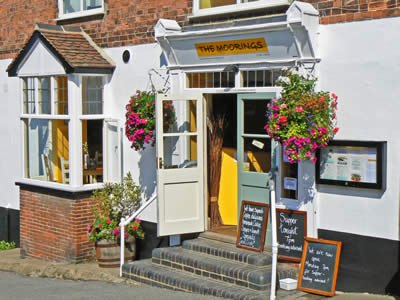
Blakeney Restaurant |
A little further along the North Norfolk Coast is Cley next the Sea, yet another village nearly a mile from open water. The area between the village and the sea is now occupied by one of the best nature reserves in Norfolk and has been designated an Area of Outstanding Natural Beauty. The nature reserve contains a brand new environmentally friendly visitor centre incorporating an observation area. The village itself is dominated by the picturesque 18th century windmill standing on the edge of the marshes. This famous landmark fell into disrepair in the early 20th century and has been restored into fabulous guest accommodation and is also open to the public. At the top end of the village is St. Margaret's Church, next to the village green; dating back to the 13th century, it almost seems too cathedral like for a village church! Also in Cley you will find a brilliant delicatessen where you can purchase your picnic, a local craft gallery, a famous smoke house, a bookshop, a couple of tea shops and a country pub. |
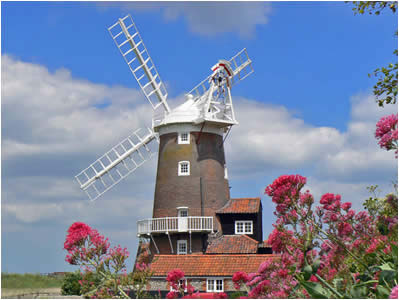
Cley Windmill |
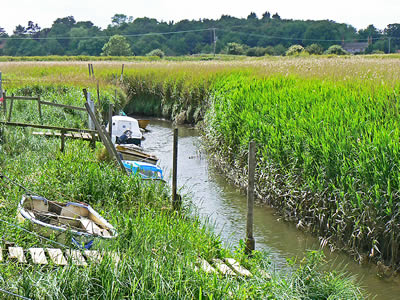
Cley marshes and creek |
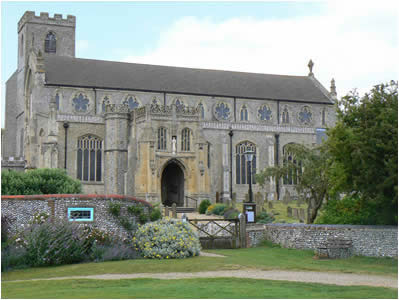
Church of St. Margaret at Cley next the Sea |
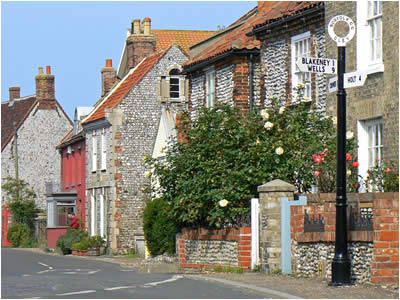
The main street in Cley |
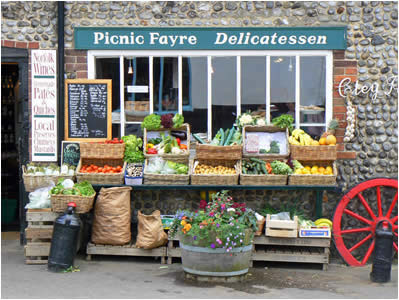
Picnic Fayre Delicatessen in Cley next the Sea |
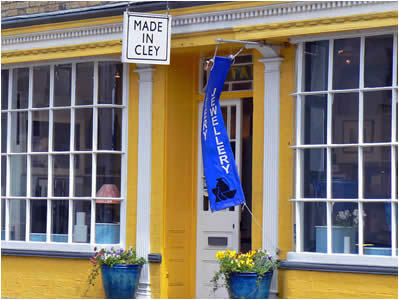
Made in Cley, craft shop in Cley next the Sea |
The small village of Salthouse nestles between a high ridge above and the salt marsh towards the Norfolk Coast. In times gone by there would have been salt pans and large piles of salt crystals ready for transport. Now, the village is a lovely quiet spot to enjoy the views over the marshes and bird watchers come from all over to observe both common and rare species. The beach is a large pebble bank and is the only protection from the penetrating north winds, high tides and severe weather. The village contains the attractive church of St. Nicholas and a lovely pub overlooking the marshes. Pretty Weybourne village nestles below Kelling Heath and is a stopping point on the the North Norfolk Railway. The ruins of an Augustinian priory stand in the grounds of the 15th century church. The beach here consists of pebbles, deeply shelved, and marks the start of the cliff section of the Norfolk coast (which extends east to Happisburgh). The village itself has many pretty cottages, a shop, pub and hotel. On the way out of the village stands a former windmill, now privately owned, and is a well known Weybourne landmark. |
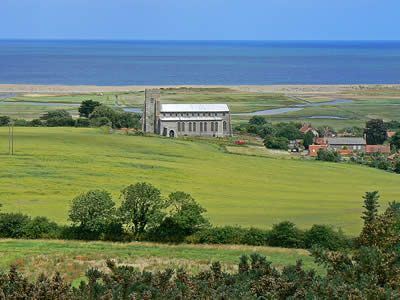
Salthouse church from Salthouse Heath |
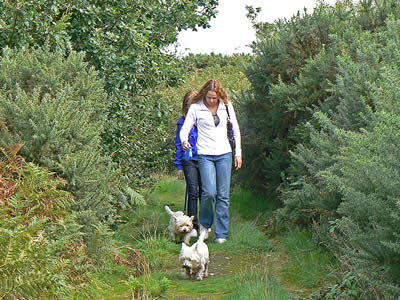
Walking on footpaths on Salthouse Heath |
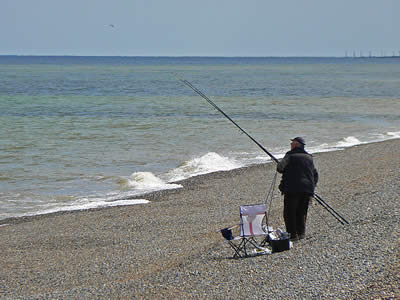
Sea fishing at Weybourne, Norfolk |
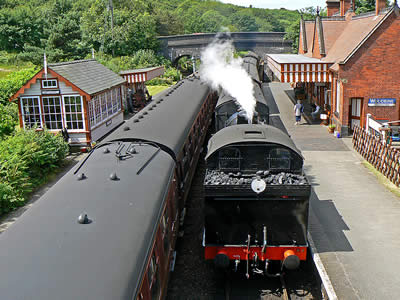
Steam train pulls into Weybourne station |
Sheringham is a traditional seaside town, which grew up around its old fishing village, and
a few little boats still bring in the daily catch. Sea, cliffs, fine sands and bracing air are some of the reasons why Sheringham is so popular. It is anything but the monotonous strip, with plenty of facilities, including many interesting shops, pubs, restaurants and tea-rooms. Among the glories of the area are the surrounding woods (including Sheringham Park), with views over the sea, and miles of bracken-covered undulating uplands, covered with golden gorse and purple heather. |
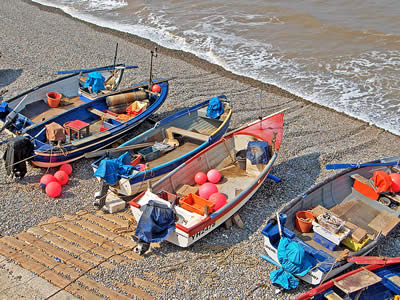
Sheringham Fishing Boats, North Norfolk Coast |
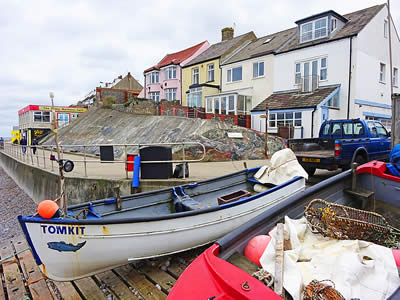
Sheringham Promenade, North Norfolk Coast |
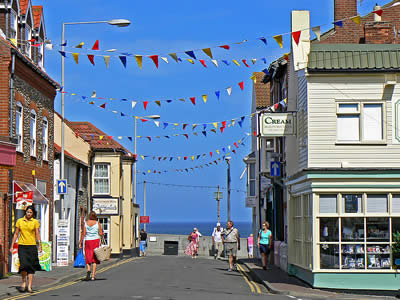
Sheringham Streets, North Norfolk Coast |
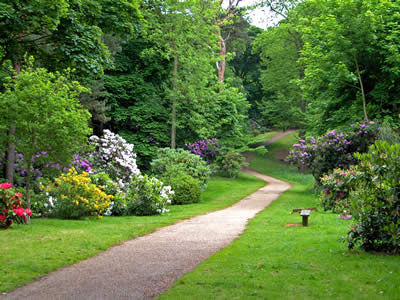
Sheringham Park, North Norfolk Coast |
The nearby town of Cromer is a classic North Norfolk coast town, situated on a cliff-top overlooking fine sandy beaches. Cromer Pier has survived despite bad damage and has a Lifeboat Station and Pavilion Theatre, which still stages end of pier shows. The church dominates the town as it has the tallest tower in Norfolk. The streets and alleys are crammed with shops, pubs, restaurants and cafes. |
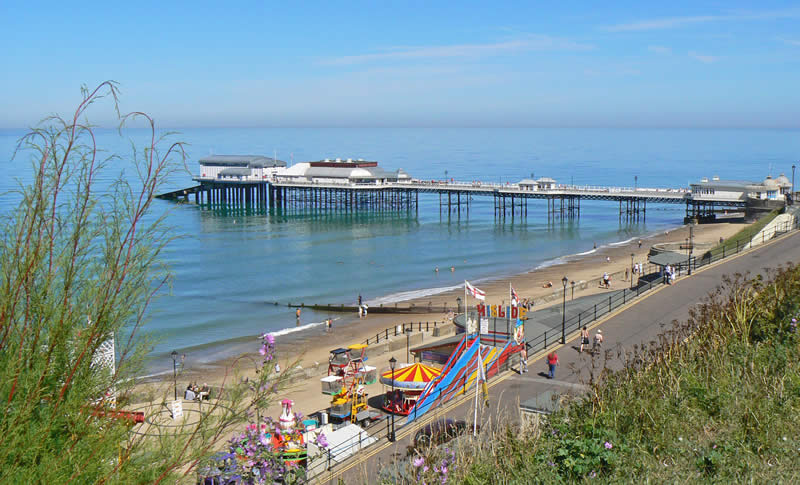
Cromer Pier |
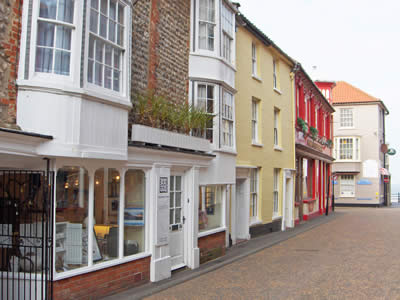
Garden Street, Cromer |
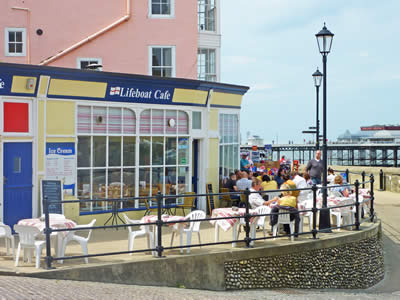
The Lifeboat Cafe |
North Walsham is a busy, mainly residential, North Norfolk town. Flemish weavers came and settled in North Walsham in the 13th and 14th centuries, helping it become the heart of the woolen and weaving industry. This brought prosperity to the town, leading to the construction of the fabulous church of St. Nicholas (now with a distinctive ruined tower). The market cross sits in the centre of the market place and was built to collect the rent for the market stalls. Today, the town has a wide-range of shops, refreshments and places to stay. |
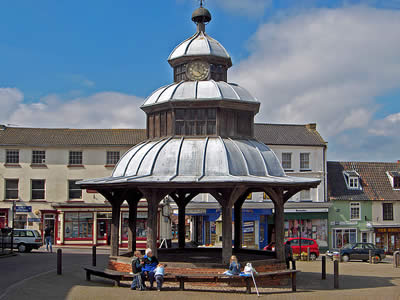
North Walsham Market Cross and Town Clock |
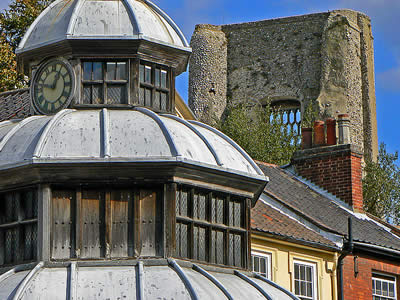
Views of the ruined church from North Walsham Market Place |
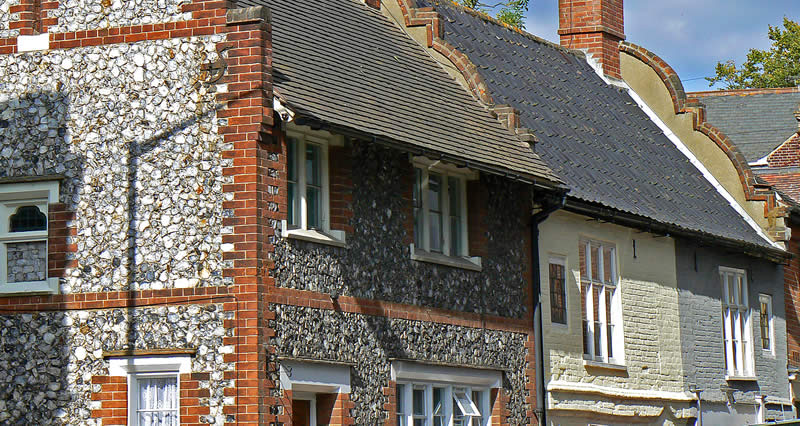
Flemish Architecture in North Walsham, originating from Flemish Weavers who helped the town prosper from the weaving industry in the middle ages |
Moving further inland, Holt is a lovely rural Georgian North Norfolk town with plenty of unusual shops and surrounded by well-wooded parks. Having been burnt down in 1708, Holt presents a comparatively modern appearance, with a spacious market place, dominated by a fine cross of Clipsham stone to commemorate the war dead. A jumble of streets and alleyways fanout from the main High Street, offering plenty of facilities including pubs, cafes, galleries, and shops to enjoy. There is a lovely country park just to the south of Holt and the North Norfolk Railway (the poppy line) runs from Holt station to Sheringham. Holt is particularly attractive at Christmas, when all the shops adourn themselves in pretty white fairy lights, making for a really festive wonderland. |
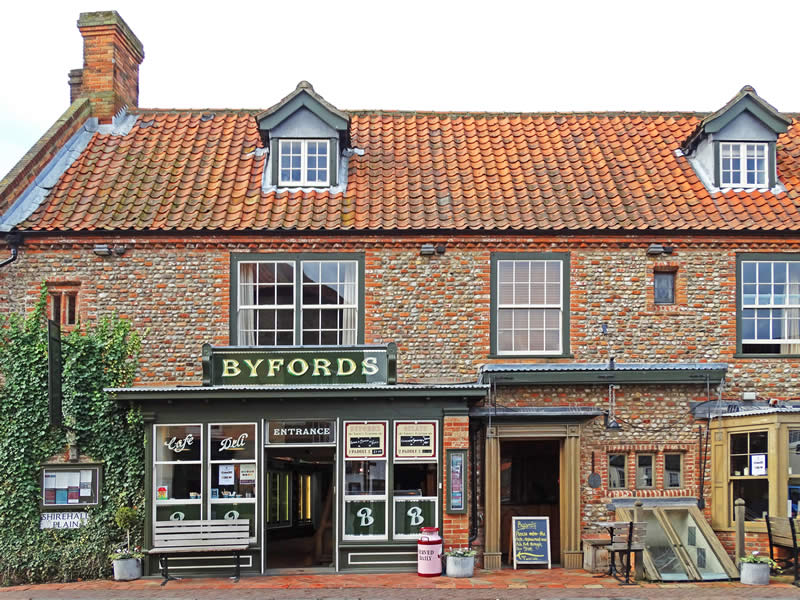
Byfords of Holt |
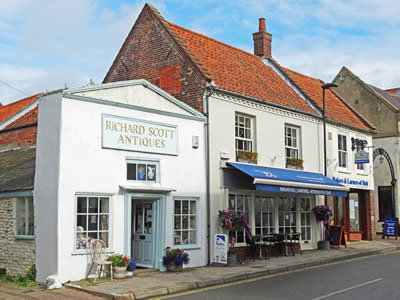
Shops and Cafes in Holt |
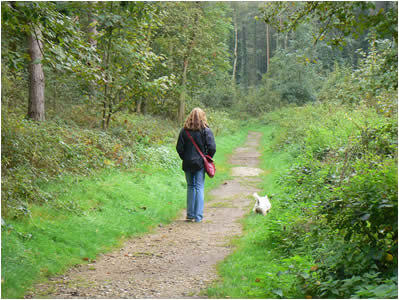
Way marked country walks in Holt Country Park |
Attractions near Holt include Baconsthorpe Castle and Letheringsett Watermill. Baconsthorpe Castle was the family home of the Heydon family from around 1450 to 1650. The family made their money from the wool industry, but accummulated debts and had to demolish the buildilding and sell as building materials. Letheringsett Watermill is Norfolk's only working watermill and a visit allows you to step back in time and discover how the mill produces wholewheat flour from locally grown wheat. |
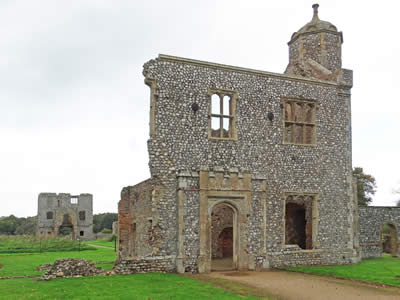
Baconsthorpe Castle |
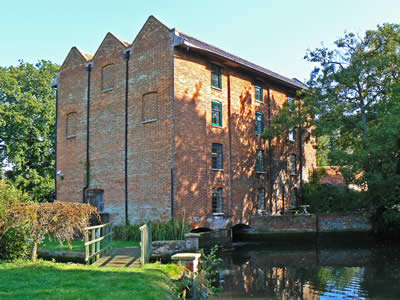
Letheringsett Watermill |
North Norfolk also contains a couple of excellent National Trust Estates. The first is the Felbrigg Hall Estate, which has remains relatively unaltered since the 18th century. It contains a fabulous collection of paintings and books, housed in fine rooms in a beautiful hall, surrounded by gardens and parkland. The second is the Blickling Estate, which has been home to soldiers, scholars and, most famously, Anne Boleyn. Blickling Hall itself, a lovely red-brick, turreted mansion, is roughly 400 years old. It's filled with a vast collection of treasures, from the portraits in the Great Hall to the extravagant furnishings of the State Bedroom. Outside, waymarked walking and cycling trails snake their way past the flower gardens, around the lake, and through 500 acres of woodland. |
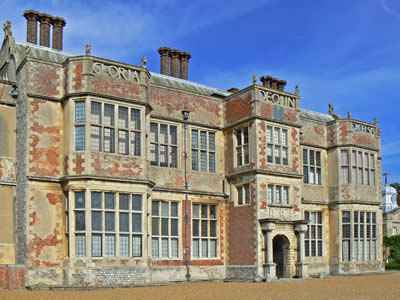 Felbrigg Hall
Felbrigg Hall |
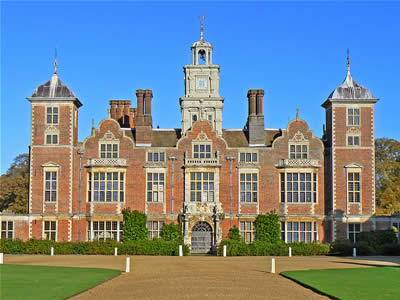
Blickling Hall |
We end our tour of North Norfolk in Little Walsingham, which in medieval times was one of the most important pilgrimage sites in the world and a rival to even Rome! That changed after the reformation, but a revival during the 19th century has put Walsingham back on the pilgrimage map and thousands now visit here each year, especially at Easter time. The village itself has some lovely old medieval streets containing interesting shops. There is also a museum containing a courthouse from the times of George III. The main attractions however are the religious sites and the remains the priory. A steam railway brings visitors to Little Walsingham from Wells next the Sea on the Wells & Walsingham light railway. |
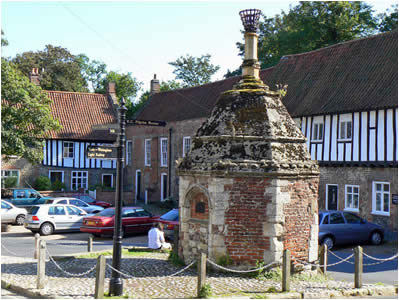
The centre of Little Walsingham |
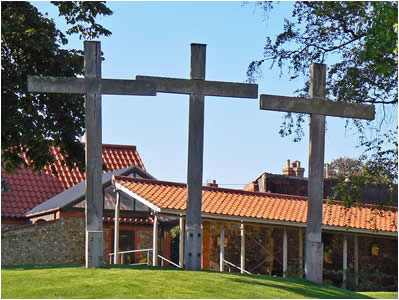
The grounds of the Shrine of our Lady in Walsingham |
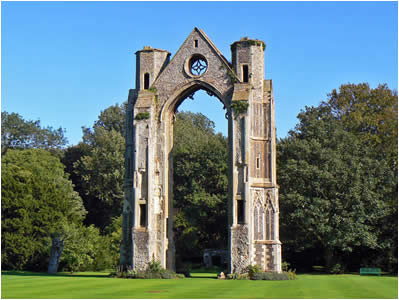
Priory Great Arch and East Window |
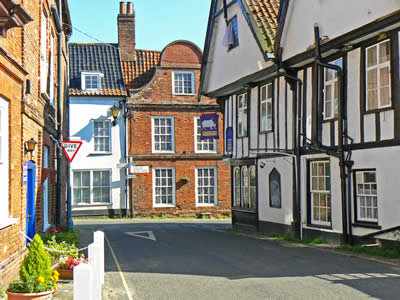
Medieval streets and alleys in Walsingham |
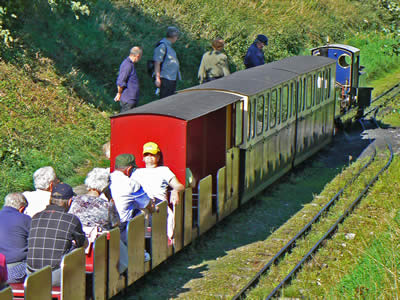
Train on the Wells Walsingham Light Railway |
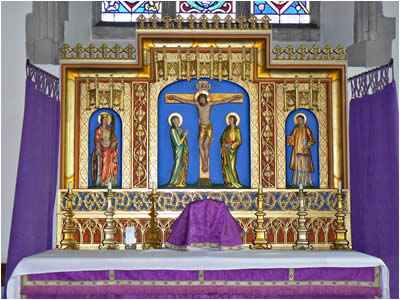
Slipper Chapel Altar |
See Guided Picture Tours of other areas of Norfolk
|
|
North Norfolk summary of what to SEE and DO
|
|
 Climb the ridge of upland behind Salthouse and Weybourne, and enjoy splendid views over the coast |
|
|
 Explore one of the seaside villages, such as Blakeney or Cley next the Sea |
|
|
|
|
Our Verdict
|
North Norfolk is a beautiful varied landscape, with so much to do its diffcult to get bored - more likely you will run out of time and not get to see all it has to offer! |
|
|
TOUR INDEX |
|
|
|
|
|
|
|
|
|
|
|
|
|
|
NORTH NORFOLK PICTURE TOURS |
|
|
|
|
|
|
|
|
|
|
|
|
|
|
TOURIST ATTRACTIONS |
 |
MORE OF OUR WEBSITES |
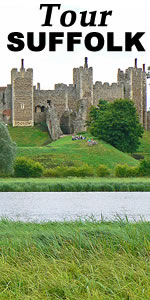 |
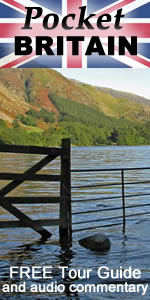 |
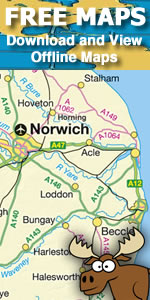 |
| |
|

